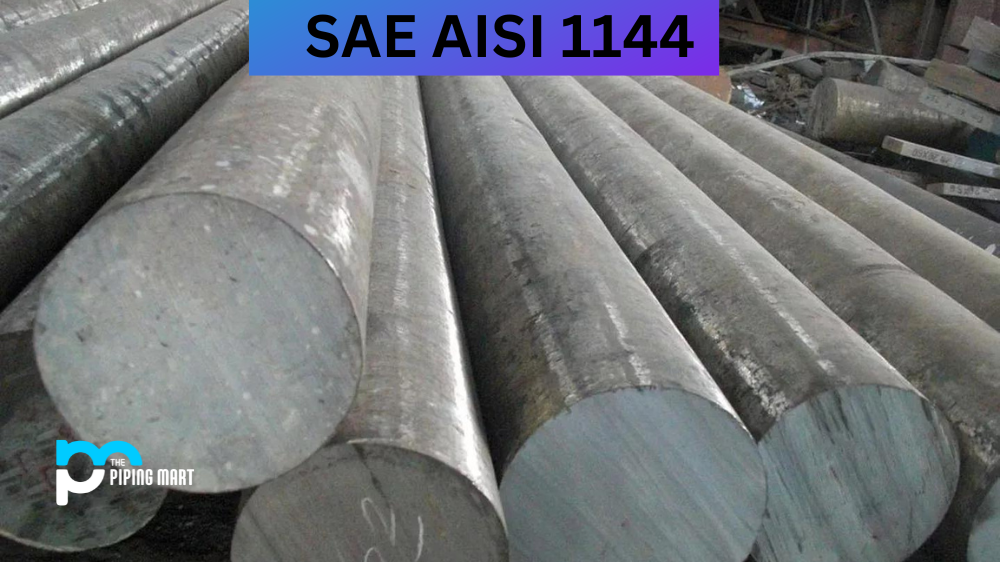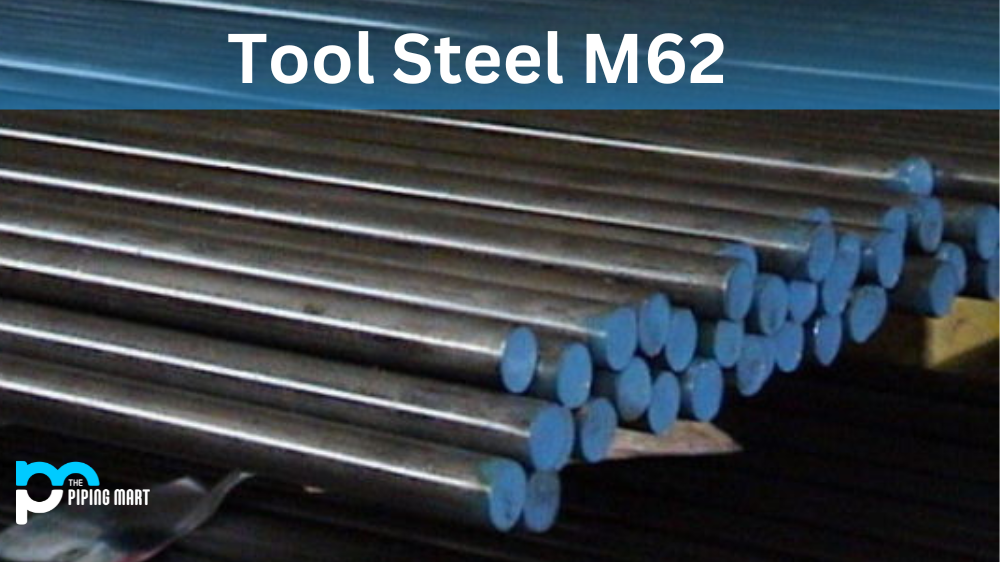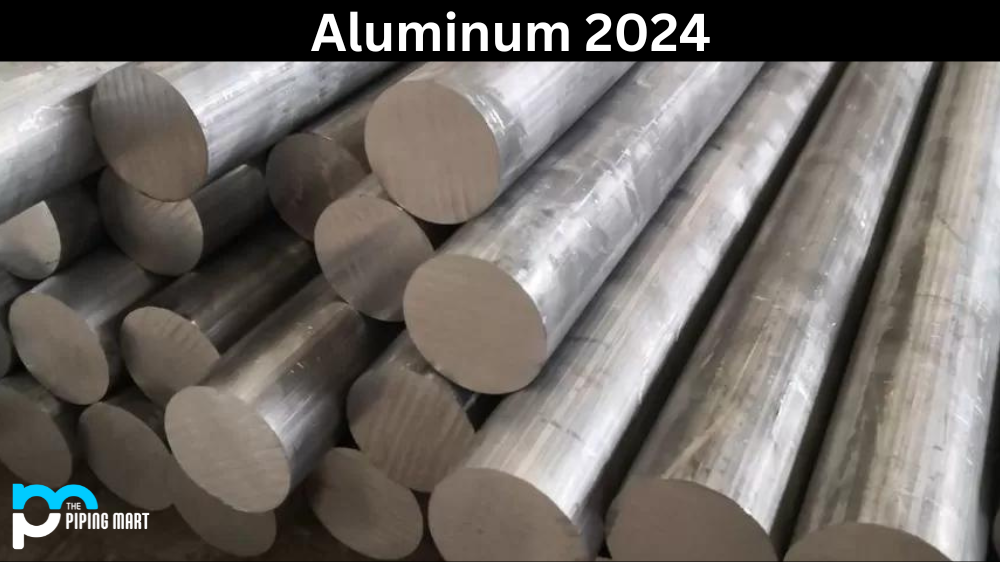If you are in the engineering, manufacturing, or construction industry, you are probably familiar with SAE AISI 1144 steel. It is a widely-used carbon steel that has gained popularity for its versatility, durability, and resistance to wear and tear. In this blog post, we will delve into the ins and outs of SAE AISI 1144, exploring its composition, mechanical and physical properties, applications and uses, resistance to corrosion, heat treatment, machining and welding techniques.
SAE AISI 1144 Composition
SAE AISI 1144 steel is carbon steel with the addition of sulphur and lead. It is classified as a desulfurized steel, meaning it has improved machinability and is easier to cut than non-desulfurized steel. The lead content also contributes to the steel’s machinability, breaking the chips produced during shearing or drilling.
| Element | Content (%) |
|---|---|
| Iron, Fe | 97.50 – 98.01 |
| Manganese, Mn | 1.35 – 1.65 |
| Sulfur, S | 0.240 – 0.330 |
| Carbon, C | 0.40 – 0.480 |
| Phosphorous, P | 0.040 |
SAE AISI 1144 Mechanical Properties
SAE AISI 1144 steel has excellent mechanical properties, including good tensile strength, toughness, and hardness. Its tensile strength ranges between 570 to 850 MPa (83 to 123 ksi). Its durability makes it an ideal material for manufacturing various mechanical components, such as gears, shafts, and axles.
| Properties | Metric | Imperial |
|---|---|---|
| Tensile strength | 745 MPa | 108000 psi |
| Yield strength | 620 MPa | 89900 psi |
| Bulk modulus (typical for steel) | 140 GPa | 20300 ksi |
| Shear modulus (typical for steel) | 80.0 GPa | 11600 ksi |
| Elastic modulus | 190-210 GPa | 27557-30458 ksi |
| Poisson’s ratio | 0.27-0.30 | 0.27-0.30 |
| Elongation at break | 10% | 10% |
| Reduction of area | 30% | 30% |
| Hardness, Brinell | 217 | 217 |
| Hardness, Knoop (converted from Brinell hardness) | 240 | 240 |
| Hardness, Rockwell B (converted from Brinell hardness) | 95 | 95 |
| Hardness, Rockwell C | 17 | 17 |
| Hardness, Vickers (converted from Brinell hardness) | 228 | 228 |
SAE AISI 1144 Physical Properties
The physical properties of SAE AISI 1144 steel include a 7.87 g/cm3 density and a melting point of 1425-1515°C (2600-2750°F). It has a modulus of elasticity of 203 GPa (29,510 ksi) and a thermal expansion coefficient of 11.2 µm/m°C.
SAE AISI 1144 Thermal Properties
| Properties | Metric | Imperial |
|---|---|---|
| Thermal conductivity (typical steel) | 49.8 W/mK | 346 BTU in/hr.ft2.°F |
SAE AISI 1144 Equivalents
- ASTM A29
- ASTM A311
- ASTM A510
- SAE J1397
- SAE J403
- SAE J412
SAE AISI 1144 Uses
SAE AISI 1144 steel finds applications in various industries ranging from automotive, aerospace, and construction to oil and gas. It is commonly used to manufacture precision machine parts such as bearings, crankshafts, cams, and connecting rods.
SAE AISI 1144 Corrosion Resistance
SAE AISI 1144 steel has moderate corrosion resistance. However, it may rust when exposed to harsh chemical environments. Proper surface treatment can improve the steel’s corrosion resistance.
SAE AISI 1144 Heat Treatment
SAE AISI 1144 steel can be heat-treated using various methods, including annealing, normalizing, quenching and tempering. Annealing at 790°C (1450°F) will give the steel tensile strength of 500-600 MPa (73-87 ksi). Quenching and tempering can increase the steel’s hardness, making it ideal for high-strength applications.
SAE AISI 1144 Machining
SAE AISI 1144 steel is easy to machine thanks to its sulphur and lead content, which reduce tool wear. However, care should be taken to ensure proper cooling and lubrication during machining to prevent overheating and warping.
SAE AISI 1144 Welding
SAE AISI 1144 steel can be welded efficiently using various welding techniques, including Gas Tungsten Arc Welding (GTAW), Gas Metal Arc Welding (GMAW), and Shielded Metal Arc Welding (SMAW). The presence of sulphur and lead can form brittle inclusions in the heat-affected zone; hence, precautions should be taken during welding.
Conclusion
SAE AISI 1144 steel is a versatile, durable, readily available carbon steel widely used to manufacture various mechanical components. Its excellent mechanical properties and ease of machining and welding make it an ideal material for high-stress applications requiring high strength and durability. By taking proper precautions during machining, heat treatment, and welding, we can unlock the full potential of this versatile steel.




